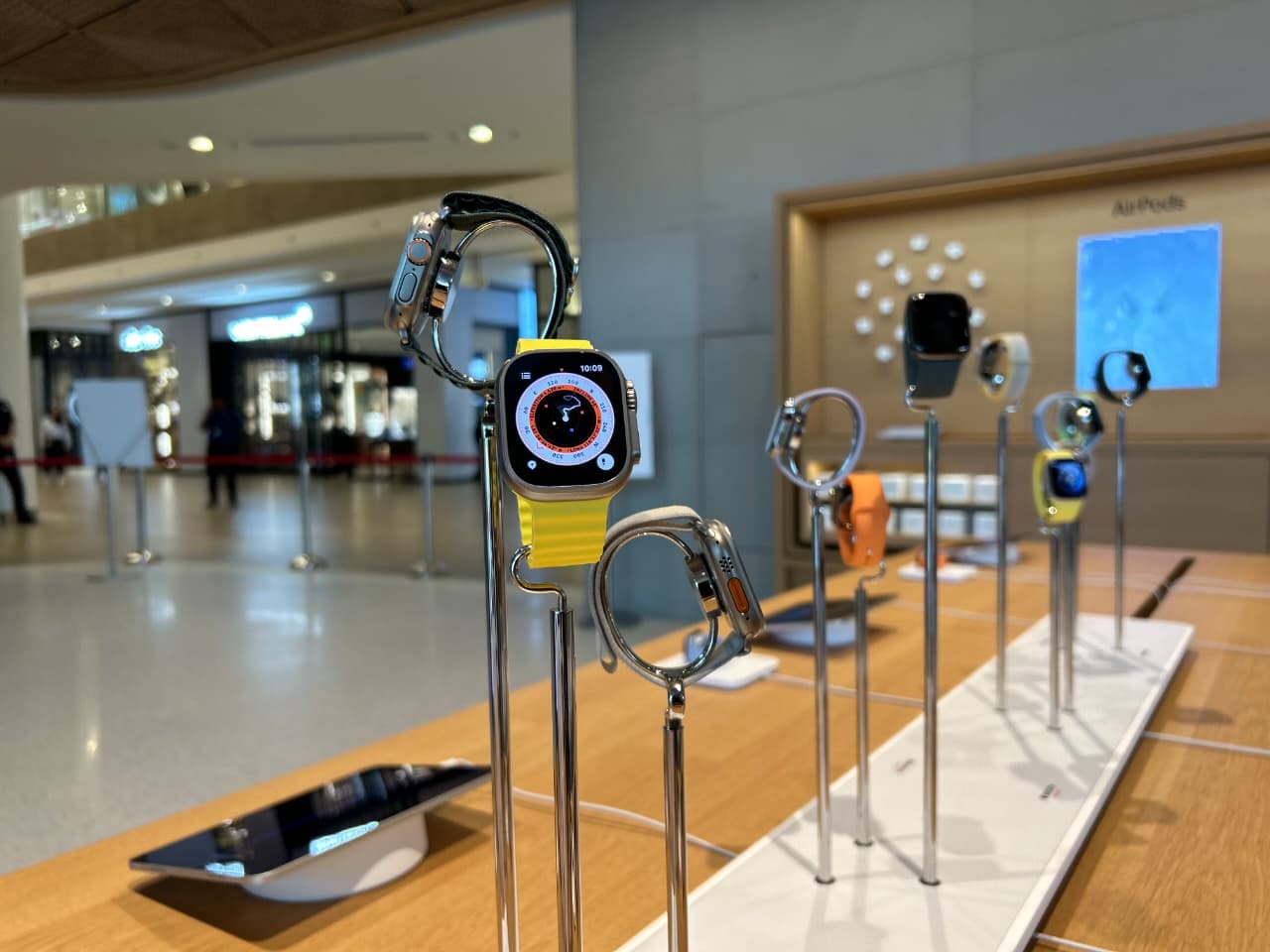Anuj Bhatia is a personal technology writer at indianexpress.com who has been covering smartphones, personal computers, gaming, apps, and lifestyle tech actively since 2011. He specialises in writing longer-form feature articles and explainers on trending tech topics. His unique interests encompass delving into vintage tech, retro gaming and composing in-depth narratives on the intersection of history, technology, and popular culture. He covers major international tech conferences and product launches from the world's biggest and most valuable tech brands including Apple, Google and others. At the same time, he also extensively covers indie, home-grown tech startups. Prior to joining The Indian Express in late 2016, he served as a senior tech writer at My Mobile magazine and previously held roles as a reviewer and tech writer at Gizbot. Anuj holds a postgraduate degree from Banaras Hindu University. You can find Anuj on Linkedin. Email: anuj.bhatia@indianexpress.com ... Read More
How screenless wearables like Whoop and Oura ring are making discreet fitness tracking popular
Whoop is already a $3 billion brand while the smart ring maker Oura is targeting $2 billion sales in 2026.
 Subscription is a big part of using screenless trackers like Whoop and Oura. (Image: Anuj Bhatia/The Indian Express)
Subscription is a big part of using screenless trackers like Whoop and Oura. (Image: Anuj Bhatia/The Indian Express)For the past two months, I have been attending some of the biggest tech conferences in San Francisco, Los Angeles, San Diego, Hawaii and Boston. To my surprise, the one device I saw on almost every top tech executive’s wrist was a Whoop, a discreet, screen-less fitness tracker that has taken the world by storm and, in many ways, seems to have won over Silicon Valley.
It’s not just tech executives wearing a Whoop or the Oura ring. The screen-less fitness tracker, designed to be worn 24/7, is everywhere, from runners and athletes to celebrities and travellers. Suddenly, fitness trackers without screens are in vogue, while smartwatches, at least from what it appears, seem to be less visible on people’s wrists.
While one could argue that devices like Whoop, the Amazfit Helio, or the Oura smart ring are targeting a niche demographic, the truth is that demand for such devices is growing – and eventually, it will start showing up among mainstream consumers.
Whoop is already a $3 billion brand while the smart ring maker Oura is targeting $2 billion sales in 2026. Both brands may be tiny in comparison to what Apple Watch brings in annually but with availability of non-screen tracking devices are expanding beyond the US and making way to India and other Asian markets, it wouldn’t take long before discreet fitness tracking to become a mainstay.
But the question is: why is everyone suddenly talking about screenless fitness tracking, and can smartwatches like the Apple Watch remain relevant in the future?
The ‘data first’ devices
A Whoop or a Polar Loop may look like simple fitness trackers, but they are, first and foremost, “data-first” devices. That’s the primary difference between the fitness bands of earlier years, like the Xiaomi Band, and even modern, premium smartwatches such as the Apple Watch. Previously, if someone wanted a fitness tracker, the goal was simple: get a device that could log your daily steps and sleep. It was slim, light, and ideal for 24/7 wear – and frankly, it served the purpose for most people.
 The Whoop strap, a screenless band that introduced continuous measurement of physical performance. (Image: Whoop)
The Whoop strap, a screenless band that introduced continuous measurement of physical performance. (Image: Whoop)
Then came smartwatches which, regardless of price, offered a much larger screen and a range of basic and advanced features, including better sensors that could track health and fitness activities. However, a ring (like the Oura) or a screen-less band (like the Whoop) is far more discreet. These devices are designed to collect data passively in the background without any screen-based distractions. Their purpose goes far beyond counting steps and measuring heart rate as they aim to provide deeper insights into recovery, stress levels, sleep quality, and overall training load.
Take the case of the Whoop, perhaps the biggest brand that dominates the screenless tracking market at the moment. Founded by Will Ahmed, then a student and captain of Harvard’s squash team, Whoop was born out of his frustration with the lack of insight into his body’s response to training. Ahmed often found himself overtraining and mismanaging his sleep, which led to poor recovery, high stress levels, and ultimately a decline in performance. This pushed him to dive deeper into understanding heart rate, recovery, and sleep that eventually led to the creation of the first device at the Harvard Innovation Labs.
The result was the Whoop strap, a screenless band that introduced continuous measurement of physical performance tracking strain, sleep, and recovery through a companion mobile app.
The early years, however, were difficult. Ahmed struggled to convince investors and was rejected by nearly every one of them. The breakthrough came when Whoop shifted its focus toward athletes rather than mainstream consumers. The device gained credibility and visibility when top athletes like Tiger Woods, Michael Phelps, Virat Kohli and LeBron were seen wearing it, spiking interest in the Whoop band.
The experience of using a Whoop 5.0 band, for example, can be very different from using the Apple Watch Series 11. Not only is the design different, but the way users interact with the device is also nothing like the behaviour associated with a smartwatch.
The Whoop band tracks health, sleep, and fitness, and it does offer some notifications. But it gives users full control to open the app and explore their data. The lack of a screen is another big difference, and it also allows for much longer battery life – lasting for days on a single charge, unlike a smartwatch that often needs to be charged every night, as in the case of the Apple Watch.
 A ring (like the Oura) or a screen-less band (like the Whoop) is far more discreet. (Image: Anuj Bhatia/The Indian Express)
A ring (like the Oura) or a screen-less band (like the Whoop) is far more discreet. (Image: Anuj Bhatia/The Indian Express)
But metrics and analysis are where things really get interesting, and where the differences between the Apple Watch and the Whoop become clear. On the Whoop, three key metrics are placed front and centre on the Home tab: sleep, recovery, and strain. That’s essentially the whole point of getting a Whoop – detailed insight into strain, recovery, and overall health. By comparison, the metrics and analysis on the Apple Watch are far more nuanced and well, simple. It focuses on giving you your sleep, health, and fitness data without offering much interpretation or deeper analysis.
Screenless bands like the Whoop and Amazfit Helio are excellent for tracking specific sports (for example, running) or for digging deeper into your body’s data, and they can even be worn on the bicep for better heart-rate accuracy during workouts. Meanwhile, smart rings from Oura and Ultrahuman are also emerging as alternatives to smartwatches. Like screenless bands, these rings are discreet and even more subtle. They excel at passive 24/7 tracking, especially for sleep and temperature, and are good at generating insights that help you understand your metrics. However, they are not ideal for workouts due to the risk of scratching and less reliable heart-rate readings.
Subscription-led approach
Subscription is a big part of using screenless trackers like Whoop and Oura, which require a mandatory monthly subscription to access your data and insights. This is a completely different business model compared to devices like the Apple Watch and other wearables, which are sold directly to consumers. For example, the Whoop band works on a subscription system, where you don’t have to pay upfront for the band.
Instead, for $30/month or $239/year, you get the band itself along with access to the app and all of its features on an automatic renewal plan. With Oura, the ring starts at $299, but it also requires a $5.99 monthly membership (the first month is actually free) to get the full smart ring experience including the app’s “scores,” sleep analysis, personalised health insights, heart-rate monitoring, and temperature tracking.
 Devices like the Apple Watch are still the most popular smartwatches on the market. (Image: Anuj Bhatia/The Indian Express)
Devices like the Apple Watch are still the most popular smartwatches on the market. (Image: Anuj Bhatia/The Indian Express)
The subscription model is here to stay. Whether it’s Whoop or Oura, both brands have built subscription components into how they reach consumers. And in the wearables segment, it seems to be working.
For example, Whoop’s model is completely different from others on the market. It essentially rents you a fitness-tracking service rather than selling you a band. In fact, it currently offers three subscription tiers: Whoop One ($199 a year), Whoop Peak ($239 a year), and Whoop Life ($359 a year), each with differences in software and hardware. The Whoop One and Whoop Peak use the same Whoop band, but Whoop Peak users have access to more software features in the app. Whoop Life uses the Whoop MG (Medical Grade) band, which has a more advanced sensor with ECG and AFib detection.
 Devices like the Amazfit Helio are targeting a niche demographic. (Image: Nandagopal Rajan/The Indian Express)
Devices like the Amazfit Helio are targeting a niche demographic. (Image: Nandagopal Rajan/The Indian Express)
The Whoop subscription model comes at a cost and is priced on the higher side compared to the Apple Watch Series 11, which retails for $399. Simply put, in a matter of two years, the entry-level Whoop subscription costs more than the Series 11. But since the Whoop is a screenless device that primarily reads your health data, the software is the key component. You are paying for the service, and without it, the band is essentially useless. For other devices, a digital subscription is typically an add-on or secondary feature, but in Whoop’s case, it is the default way you use the band.
Is the smartwatch segment dying?
Not yet. Devices like the Apple Watch are still the most popular smartwatches on the market. However, it is only the premium smartwatch segment where growth is happening – the market where brands like Apple, Samsung, Garmin, Google, and others have a strong presence.
The low-end segment, which previously was large and primarily led by local Indian and Chinese companies, has almost collapsed due to limited functionality, even though entry-level models once drove the smartwatch category by bringing in new users. Now that this segment has declined, consumers looking for budget alternatives have very few options.
Meanwhile, screenless wearables and smart rings are aimed at a niche crowd who want a tracker with no screen, in-depth analysis, and excellent battery life. They aren’t cheap, but they cater to a new type of user. The good news is that many new brands are introducing screenless wearables at lower costs and without subscription requirements. The market for screenless trackers may expand if more devices are launched at lower price points.
The biggest takeaway is that while the smartwatch market may not grow at the same pace as before, the segment will coexist alongside premium and entry-level screenless bands and smart rings. For consumers, it is important to note that the experience of using screenless wearables is very different – showing that a variety of options will continue to exist, catering to all kinds of people.








